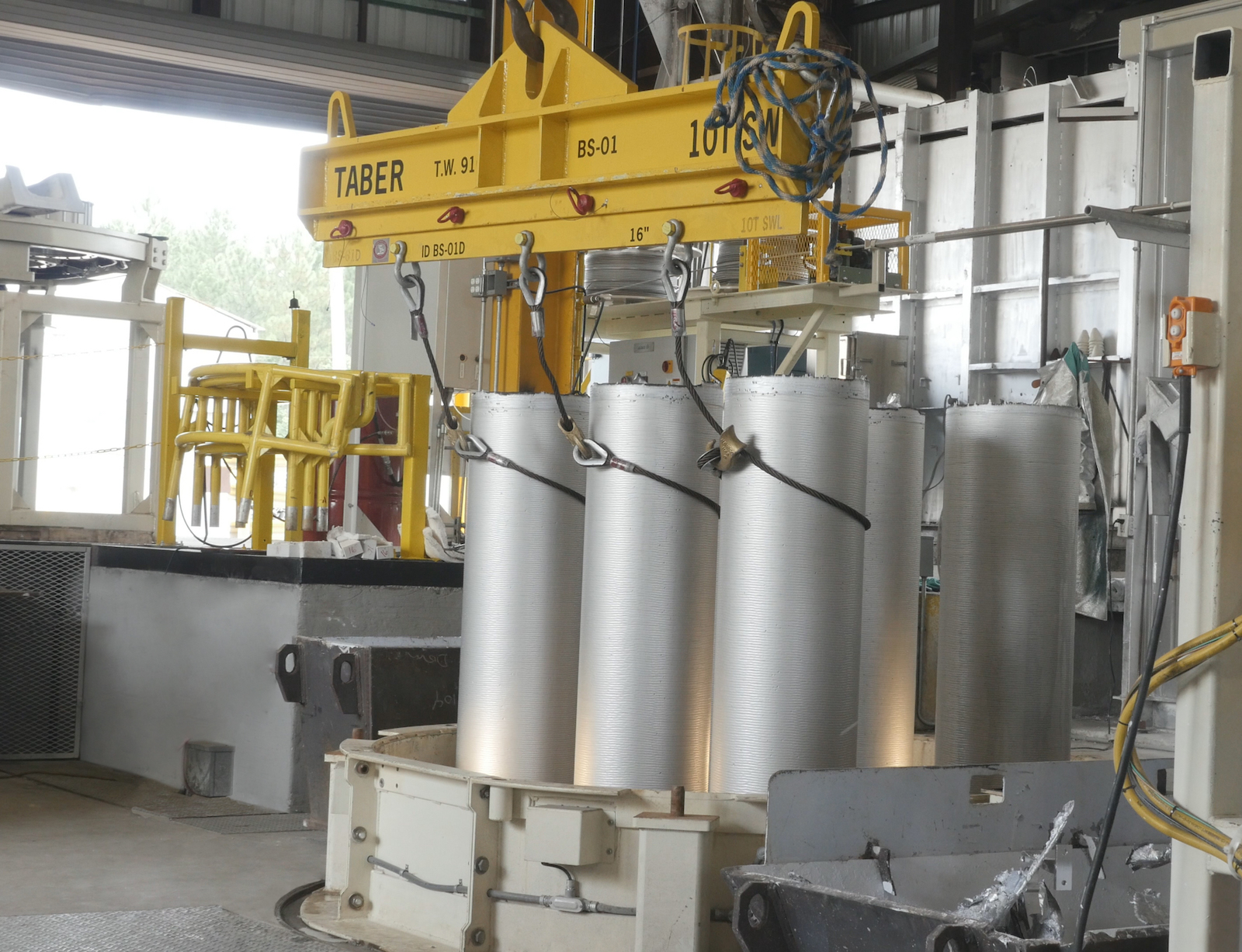
Taber Extrusions recently completed significant upgrades to their aluminum casthouse in Gulfport, MS (Figure 1), enabling the company to integrate its casting, extrusion, and fabrication services in-house. The upgrades provide Taber with the ability to improve the quality of its products throughout every step of the manufacturing process, which opens up opportunities in a variety of markets — not only in aluminum profiles, but also with the sale of cast billet to outside extruders.
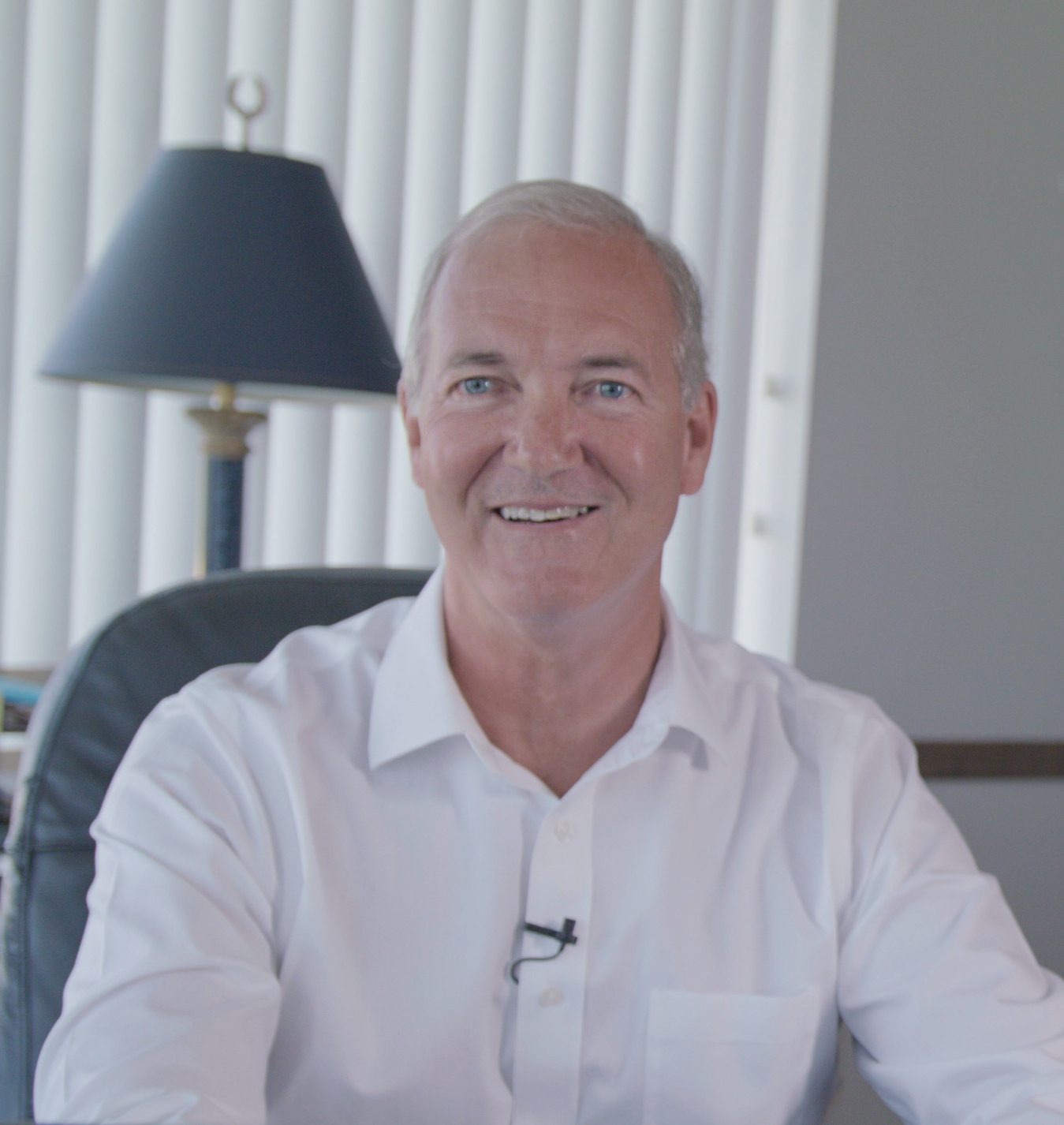
“Working with our customers, Taber continuously looks to develop those unique alloys and casting practices that can enhance the quality, properties, and physical characteristics of their products and can improve manufacturing efficiencies,” said Eric Angermeier (Figure 2), president of Taber Extrusion. Among the markets Taber is targeting are the aerospace, automotive, and defense industries, which are utilizing aluminum at an accelerated rate. Furthermore, the company expects that the casting capacity created from upgrades will enable it to offer products for current and future U.S. infrastructure projects, such as the construction and improvement of bridges, decking, flooring, and railing for mass transportation projects, along with applications for military and marine structures.
Company Profile
Taber Extrusions was founded in 1973, when the Taber family acquired an aluminum extrusion plant in Russellville, AR, from Dow Chemical (which had originally built the plant in 1970). National Material Company L.P. (NMLP) later purchased the company in 1976. The Arkansas facility was originally dedicated to the production of specific military related large, wide, and long extrusions for the U.S. Government, for which the company pioneered a process for extruding rectangular billet (or slab). The use of rectangular billet enables the company to extrude solid profiles up to 31 inches wide or hollows up to 29 inches.
In 1995, Taber expanded with the purchase of an extrusion facility in Gulfport, MS, which houses a casthouse and two additional presses. Fabrication capabilities were added to the Russellville facility in 2014, which already houses the company’s large 8,600 MT press with three container sizes (a container for the extrusion of rectangular billet, as well as two round containers, a 16 inch and a 20 inch). The fabrication area has been expanded several times since it was constructed, with the addition of B&O B-800 series and Marvel band saws for precision cutting, horizontal and vertical machining centers, and a Zeiss coordinate measuring machine (CMM) for quality control.
To this day, the company continues to extrude billet in a wide range of alloys and sizes, including for the same military program, which remains one of the company’s biggest customers. However, Taber has diversified its markets since its inception to include aerospace, automotive, marine, and sporting goods, among many others. For these markets, the company supplies cast and extruded products in a variety of soft and hard alloys.
“Taber has some very unique capabilities, because we have one of the largest presses in the country,” said Allan Bennett, vice president of Marketing for Taber. “We can also offer the more typical sizes out of our 7 inch, 9 inch, and 11 inch containers.” Specifically, the range of extrusion capabilities is less than 1 lb/ft to over 140 lbs/ft, with wide and heavy multi-void hollows being a specialty. Another specialty of the company is its ability to supply extrusions in 5xxx marine-grade alloys. Bennett stated that Taber is “the only consistent supplier of this marine grade aluminum alloy in the country. We are one of the few companies with this specialized capability.”
Modernized Casthouse
Taber took another step in its growth with the completion of the modernization and upgrades of its casthouse in July 2017. The casting technology in Gulfport was 25 years old, which limited the internal and external quality of the billet. In order to meet the demands of markets with high technical requirements, the company chose to upgrade with the latest casting technologies.
Taber forged a partnership with Almex USA early on, working directly with the supplier to develop a customized solution to meet Taber’s unique requirements and specifications. Over the course of the project, Almex provided general plant engineering, equipment layout planning, utility planning, and a technology transfer package with aerospace alloy production know-how, along with a complete casthouse line.
In order to facilitate upgrades to the casthouse, all of the existing casting equipment was removed, including the entire old casting machine, filter, manual water system, and trough degasser. Only the existing melting furnaces remained, however, the refractory, combustion, and auxiliary systems in the furnaces were fully refurbished by Taber engineers. New equipment supplied by Almex included a casting line with a degassing and melt purification system, billet and slab tooling, automation technology, and a complete homogenizing line, as well as a new cooling water system.
Replacing the old equipment with the new casting line presented unique challenges, as the old line was outfitted with a circular casting pit, a legacy design that was likely meant to provide efficient casting of the small diameters that were originally needed for the Gulfport presses. Circular pits are no longer common in new construction, and they pose an engineering challenge for modernization jobs, especially when there is no adjacent return water pit where water pumps, utilities, sensors, etc. are kept (as was the case with Taber). Considering the high water table (less than 24 inches below grade) and poor soil conditions near the Gulf of Mexico where the plant is located, Almex and Taber engineers decided to keep the existing circular pit in place with the installation of customized equipment.
The CASTRIGHT II™ casting machine and new billet and slab tooling stations (Figure 3) that were installed had to be adapted to fit the circular pit. Therefore, the casting tables were modified to have an oval shape with unique headbase configurations. Excel™ and Optima™ billet mold systems were installed for 8, 9, 11, 16, and 20 inch billet and for 9 inch x 27 inch rectangular billet (slab). Almex was also able to increase the amount of billet produced with each cast (even with the existing circular pit), which allows for increased production per drop, as requested by Taber.
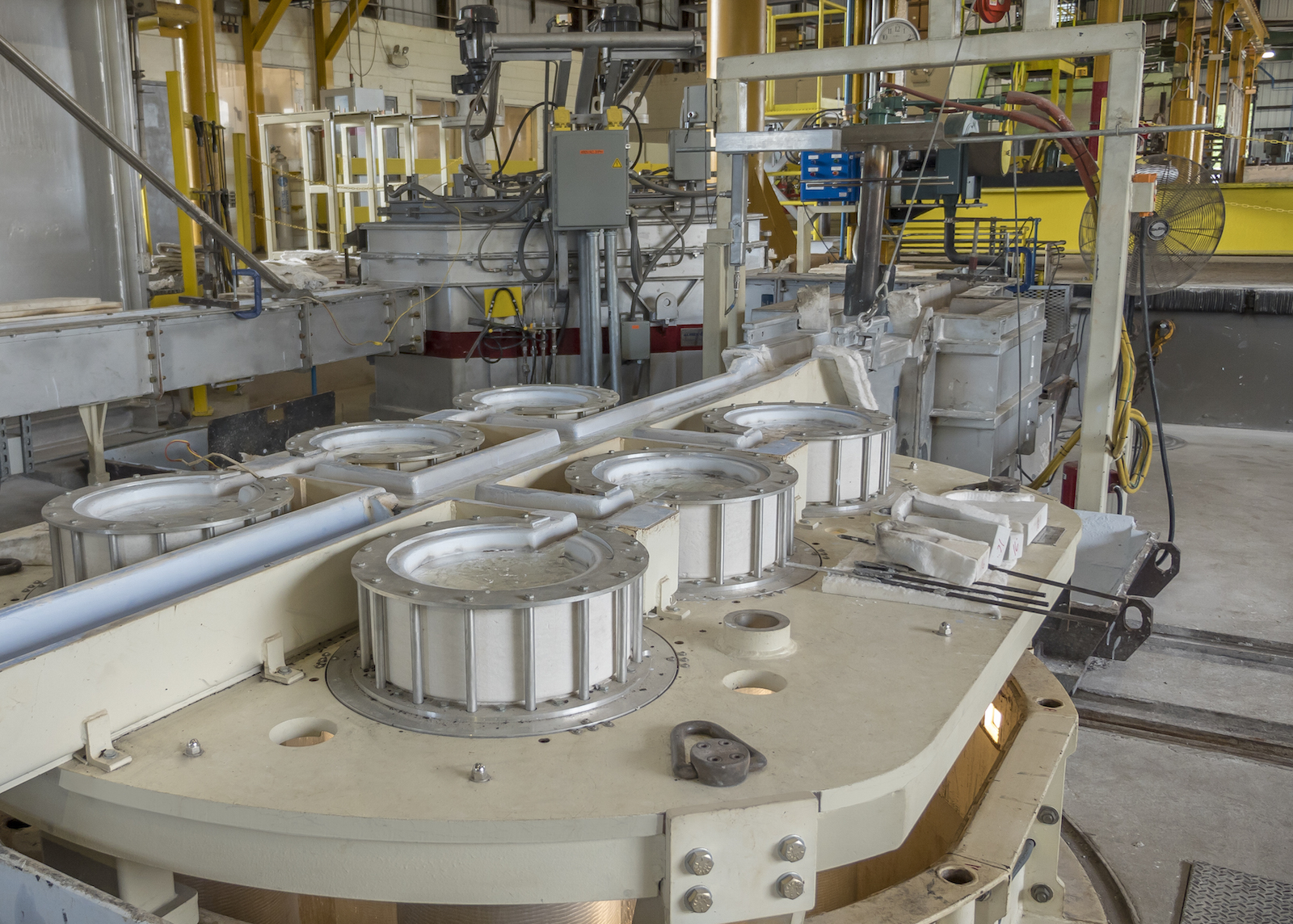
The specific tooling considerations also aided in quality control, such as with the completely level pour (or hot-top) mold table distribution systems and optimized mold lengths for consistent billet quality. Each billet station was constructed with safety and alloy versatility in mind for high performance and yield, from conventional to the most demanding alloys. For the larger diameter aerospace grade products, Almex’s specialized water wiping technology was installed for the manufacture of difficult to cast materials without the formation of stresses or cracks.
A major change to the casting machinery was the platen cylinder. Almex’s system uses an internally guided and double acting cylinder. The new setup has more loading capacity, guiding accuracy, and precision speed control (needed for hard alloys), which was not available with the prior single acting, externally guided system. Civil work on the casting pit was required to remove the old cylinder in order to accommodate the new system.
Engineering and design for these changes were drafted by Almex, and contractors were hired by Taber to complete the work. Due to the high water table, the entire crew had to be quick on their toes, coming up with newly engineered plans during construction in order to combat the water ingress into the civil work. “Retrofitting the existing casting pit to accept the new platen cylinder was a particular challenge, which required partial excavation of an existing foundation at 20 ft below grade, without engineering documentation of soil conditions,” said Allan Sewell, engineering manager for Taber. “Ground penetrating radar (GPR) was used in an attempt to define excavation parameters. The new below grade structure was engineered to meet both functional requirements and resist encroachment of ground water, with soils consisting of very soft silts, soft clays, and sand. Excavation required the use of well-pointing, sumps, and soil replacement. Construction site prep for the water basin required the use of cone penetrometer testing (CPT) of soil conditions to depths of 60 ft to engineer a foundation consisting of fifteen 14 inch cast-in-place piles 50 ft deep. The basin walls are 18 inches thick and contain 26 tons of steel reinforcement.”
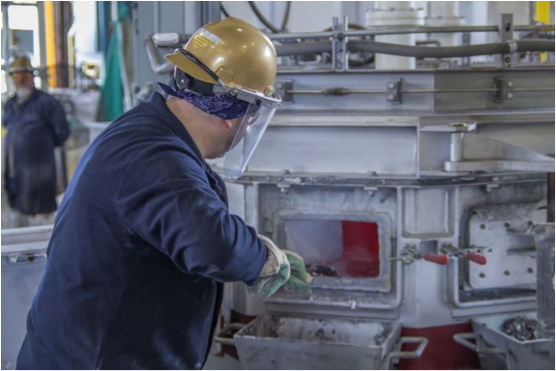
The new casting line also includes a LARS® in-line degassing and purification system (Figure 4), which refines and cleans the melt prior to casting. The LARS system administers a mixture of inert argon gas and a halogen gas into the molten aluminum through Almex’s patented in-situ gas preheating disperser system. The process significantly reduces hydrogen and other impurities commonly found in liquid aluminum, including inclusions, nitrides, oxides, and alkali metals. The controlled process also results in a minimal amount of dross creation for increased recovery. By assuring the high quality of the molten metal, Taber is able to produce billet with dependable strength, smooth exterior, and consistent extrusion performance.
The integration of new casthouse equipment also required increased monitoring and automation. A new system was installed that enables computer control of all critical casting and degassing parameters. Operators interact with the system through an integrated SCADA control panel installed on the plant floor. Successful casting operations require the correct mixture of several ingredients that make up the casting recipe, such as alloy, diameter, casting speed, water flow rate, and grain refinement—all of which are under full control of the operator with the system’s automated recipe execution. At the conclusion of each cast, the system automatically generates a complete report of the heat number for reference and archival by quality control personnel. With this new system, Taber has achieved a greater level of quality control, process transparency, and product traceability, which is vital to many of the industries the company serves.
Due to the large role which casting water plays on product quality, the casthouse modernization also includes a completely rebuilt and integrated water management system. The centralized Almex water system provides increased visibility of the water flow, temperature, quality, and maintenance. “Our new water system is more environmentally friendly than our former,” said Sewell. “It allows for traditional water discharge in a safe and controlled manner. It’s a big upgrade compared to our prior system, which required constant maintenance and hazardous hauling of certain water system related materials.”
In addition to the new casting line a complete homogenization furnace (Figure 5) and rapid quench fan bank were installed with their own SCADA and automation system. Tight and uniform temperature control eliminates residual stresses, controls segregation, and optimizes the metallurgical phases and grain for improved extrudability and metallurgical properties in the finished product. The new homogenizing furnace has a precise recipe execution system that relies on the load temperature for control of the combustion heat. By monitoring and controlling metal temperature, a practice not previously possible with Taber’s old furnace, the plant is now capable of processing hard alloys in strict temperature control ranges. For processing of soft alloys, a very large rapid quench station was provided to replace the previous fan bank, which did not meet ideal cooling rates before for the whole load and impacted billet metallurgical characteristics. The furnace also features faster processing times and increased capacity.
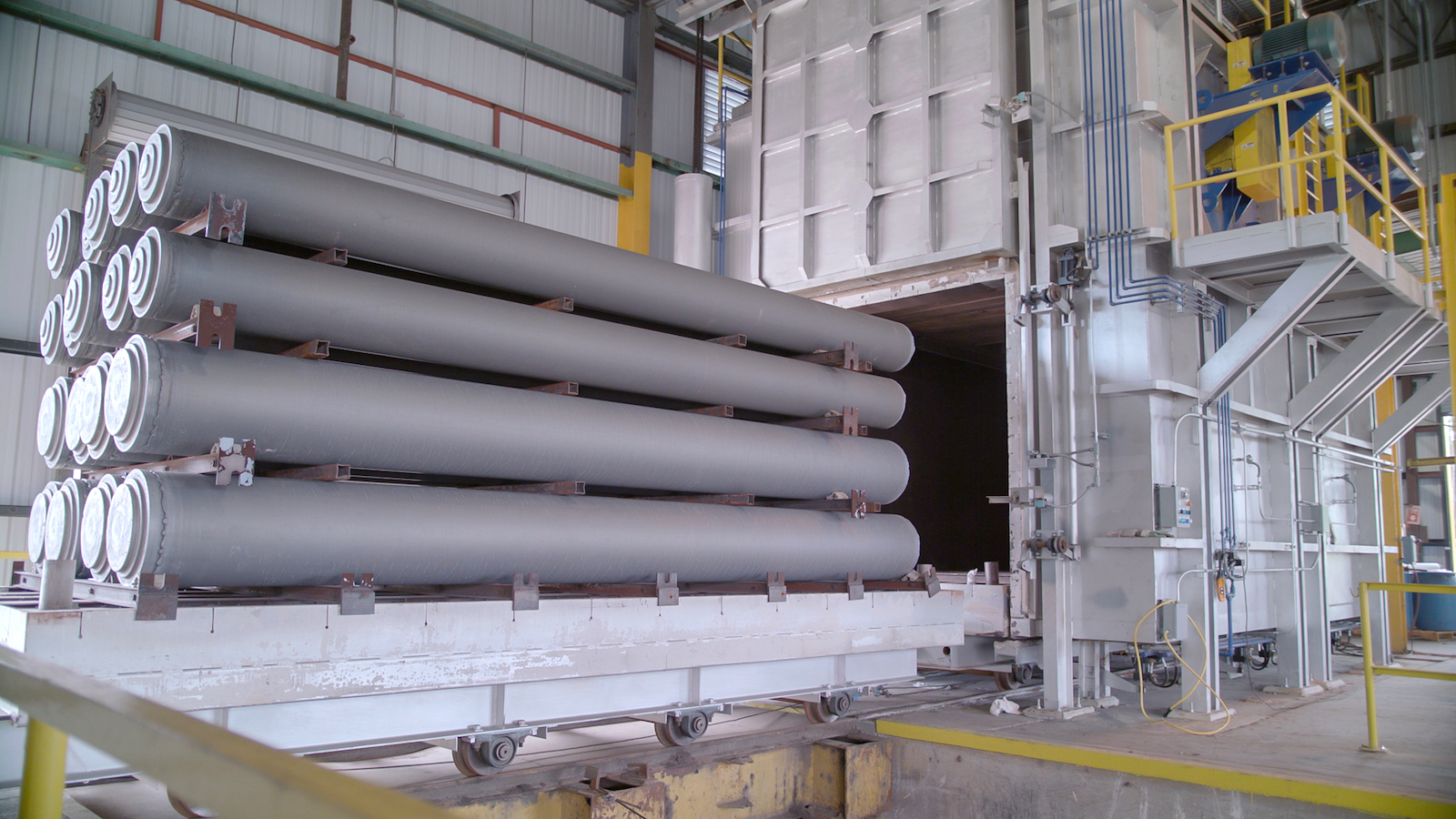
The new homogenizing line was configured within the facility in such a way as to allow for an additional furnace to be added in a second phase of expansion. Additional homogenizing capacity will be required as Taber increases its hard alloy production portfolio in the casthouse, because aerospace alloys have significantly longer processing times in homogenization.
Conclusion
With the completion of the casthouse modernization, Taber has increased its billet capacity by over 30%, expanded its range of high quality aluminum alloys (hard, soft, marine, aerospace, and defense), and enabled the use of more diverse scrap material in its process, allowing for the production of billet with high recycled content. “We have evolved into a fully integrated supplier with control over our raw materials by casting the alloys and diameters necessary to feed our extrusion presses,” said Angermeier. “Our recent casthouse modernization has significantly increased the billet quality that will flow through all aspects of our business. Our capabilities to serve diverse markets are greatly enhanced and we now have capacity for third party sales of extrusion billet and large forging stock.”
Editor’s Note: This article first appeared in the October 2017 issue of Light Metal Age. To read more articles from this issue, please subscribe.
